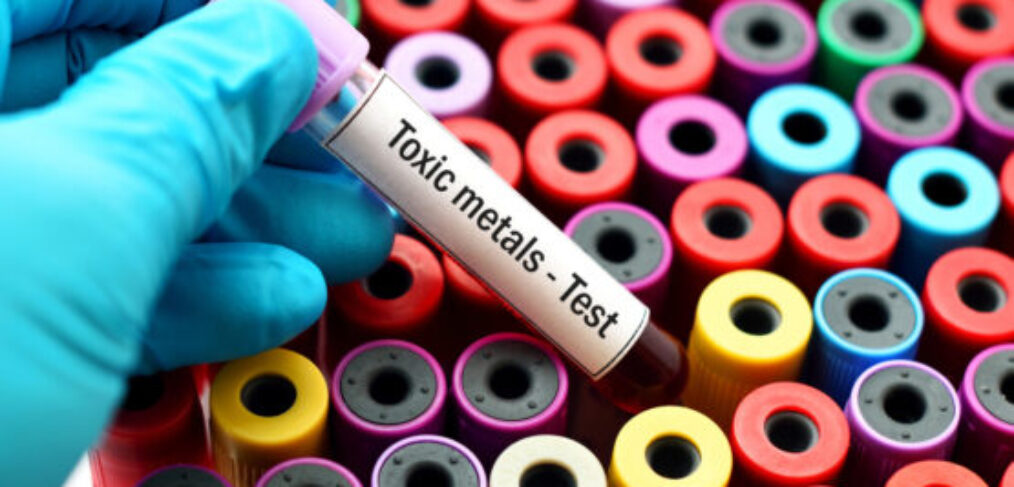Are Heavy Metals the Root Cause of Your Symptoms?

In 2000, Bangladesh was quoted as having suffered the largest mass poisoning of a population in history according to the World Health Organization Bulletin. This is due to the contamination of groundwater—the main source of drinking water—with naturally occurring inorganic arsenic (1)
While this example may well be one of the most egregious of heavy metal toxicity or poisoning, it doesn’t always take a mass exposure to create havoc.
A CDC (2) study estimated that around 2.1 million people may be exposed to high levels of arsenic in their drinking water. Furthermore, research indicates that a significant portion of the population is exposed to a combination of heavy metals, with some studies showing that nearly half of the US population may be exposed to a combination of three or more metals.
It’s not always as obvious we might expect; toxic levels of metals can build up over time and may not necessarily create symptoms for a while.
Heavy metal poisoning occurs when microscopic molecules of metals accumulate within your body after exposure. Heavy metals attach to your cells and prevent them from performing their functions, which causes symptoms that could be life threatening without treatment (3).
The most common toxic metals are Mercury, Lead, Chromium, Cadmium, and Arsenic (5).
Some exposure sources might not be surprising; if your home was built before 1978, it is more likely to have lead-based paint. In 1978, the federal government banned consumer uses of lead-based paint, but some states banned it even earlier (5) but lead-based paint is still present in millions of homes, normally under layers of newer paint.
Mercury is another common buzz word- we are advised not to consume too much of the larger fish such as tuna, sharks and swordfish (6). There is a nearly century old debate on the use of mercury in dental fillings, known as The Amalgam Debate (7); in 1984, autopsy studies revealed a correlation between the amount of mercury found in brain and kidney tissue and the number of amalgam fillings a person had.
But what about chromium and cadmium? Or perhaps less commonly found, metals like chromium, thallium, and nickel?
Where and how are we being exposed to these and how do we know if we have been effected?
On my own journey, I was fortunate enough to have a very thorough functional medicine doctor who ran a heavy metal screening as part of my annual exam one year and we found my mercury levels were 20 mcg/L; normal levels are below 5!
I was completely asymptomatic.
Fortunately, I was able to remediate it holistically (read more about that here ) and lower my mercury level down to 4 one year prior to getting pregnant).
Unfortunately, avoiding heavy metal exposure is not as obvious as not breathing in toxic chemicals, such as what we experienced in the aftermath of the recent fires here in the Palisades. Lead can be found in contaminated water and soil, mercury may be present in topical antiseptics. Thimerosal, an ethylmercury-containing preservative in some multi-dose preparations of influenza vaccine, could cause mercury poisoning (8). Topical creams, herbicides, insecticides, pesticides, fungicides can contain arsenic.
In other words, there are potential contaminants all around us.
You may or (like me) may not have symptoms, and sometimes the symptoms are even trickier to decipher because the metal toxicity may have triggered other responses in your body, such as autoimmune compromises, cancers, cardiovascular issues, kidney, liver and neurological issues.
The good news is that testing is available and relatively non invasive (unless you consider collecting a hair sample invasive).
Vibrant and Quicksilver are two brands that offer testing using hair, blood and urine. Each provide different and important information about exposure – blood indicates recent, urine recent as well as the body’s ability to excrete and hair – long term exposure and accumulation.
Even if you don’t feel you’ve got a reason to consider exposure as part of what your current health picture may be, asking your functional medicine to run these simple tests has no down side. Knowing you have, or do not have to address this is an important piece of creating your own journey to optimal health.
Being informed about your own body is not only empowering, it’s crucial.
So… ask about it and if you’re told you needn’t consider it due to not having had an obvious exposure, perhaps seek another opinion until you get the support on your individual path that you need.
- https://pmc.ncbi.nlm.nih.gov/articles/PMC4772235/
- https://pmc.ncbi.nlm.nih.gov/articles/PMC5693367/
- https://my.clevelandclinic.org/health/diseases/23424-heavy-metal-poisoning-toxicity
- https://pmc.ncbi.nlm.nih.gov/articles/PMC8078867/
- https://www.epa.gov/lead/protect-your-family-sources-lead
- https://www.fda.gov/food/environmental-contaminants-food/mercury-levels-commercial-fish-and-shellfish-1990-2012
- https://www.ncbi.nlm.nih.gov/books/NBK531943/
- https://www.chop.edu/vaccine-education-center/vaccine-safety/vaccine-ingredients/thimerosal





